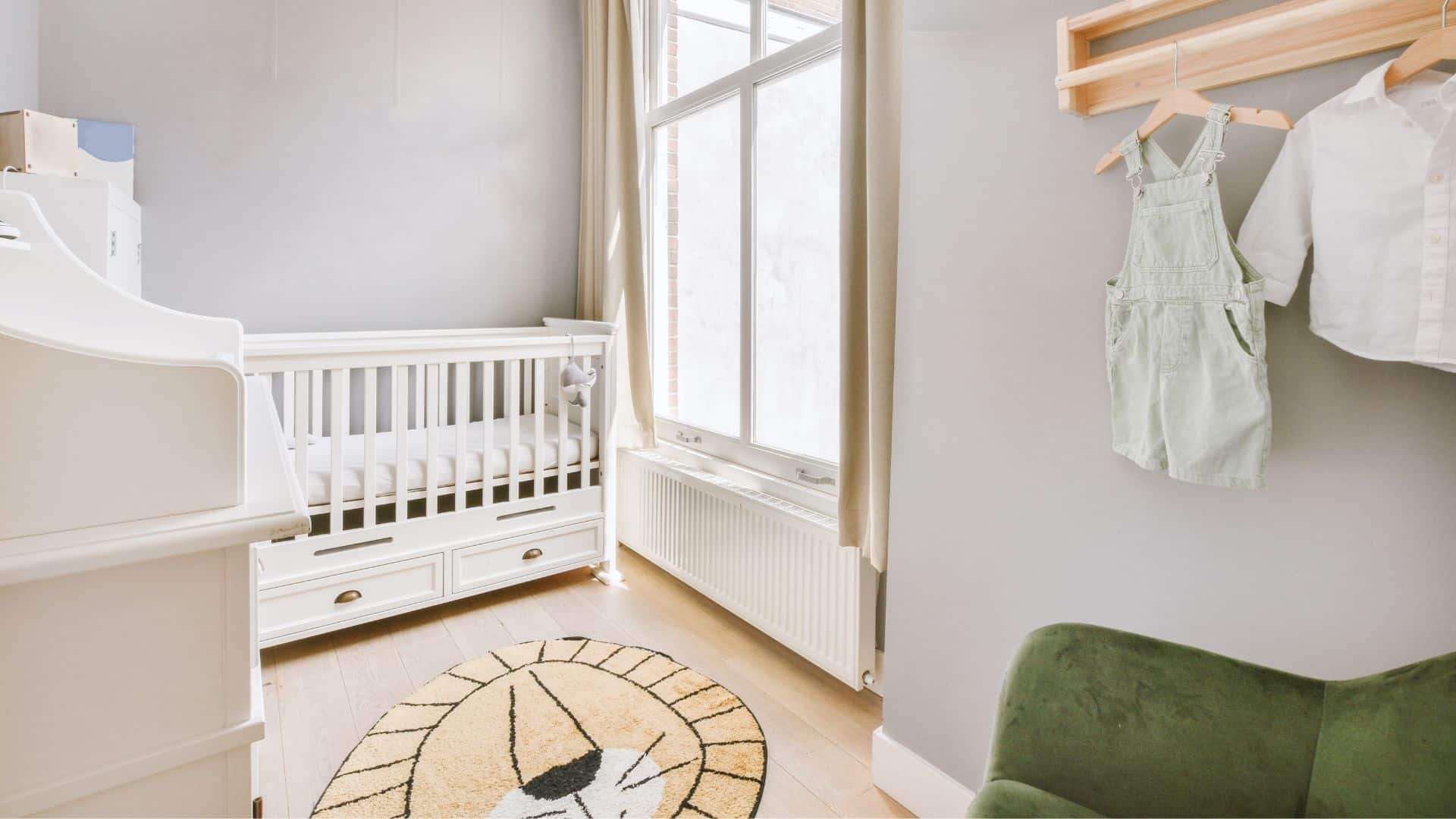
Choosing the right cot or crib for your baby can be an overwhelming process. With hundreds of frames, styles and sizes on the market, it can be difficult to know which sleeping solution offers the right comfort, safety and suitability for your child’s needs. We discuss the different types of cot mattress sizes and how to choose the right one for your family.
There are two key sizes in Australia for baby cots and cribs: standard and compact. We discuss these and other sizes below. However, the best mattress depends on the cot itself. If your cot does not come with a matching mattress, you should choose one that follows the safety information either on the label or the assembly instructions.

Under Australian mandatory product safety standards, new cots must come with a recommended mattress size and thickness that is appropriate for the frame, and safe for your baby. Second-hand cots likewise have some safety benchmarks that you may follow.
The recommended cot mattress must have:
- No more than 2 cm (or 20 mm) gap between the mattress and the cot on any side when it’s in the middle
- No more than 4 cm (or 40 mm) gap when the mattress is pushed to one side of the cot
- Adequate firmness — no loose or cushioned surfaces (read more)
If you are unsure about your cot, or you have any concerns about finding a suitable and safe sleeping arrangement for your baby, we recommend checking official sources for information and advice. There are articles on safe sleeping featured on Red Nose Australia and the government Department of Health and Aged Care.
Different cot mattress sizes
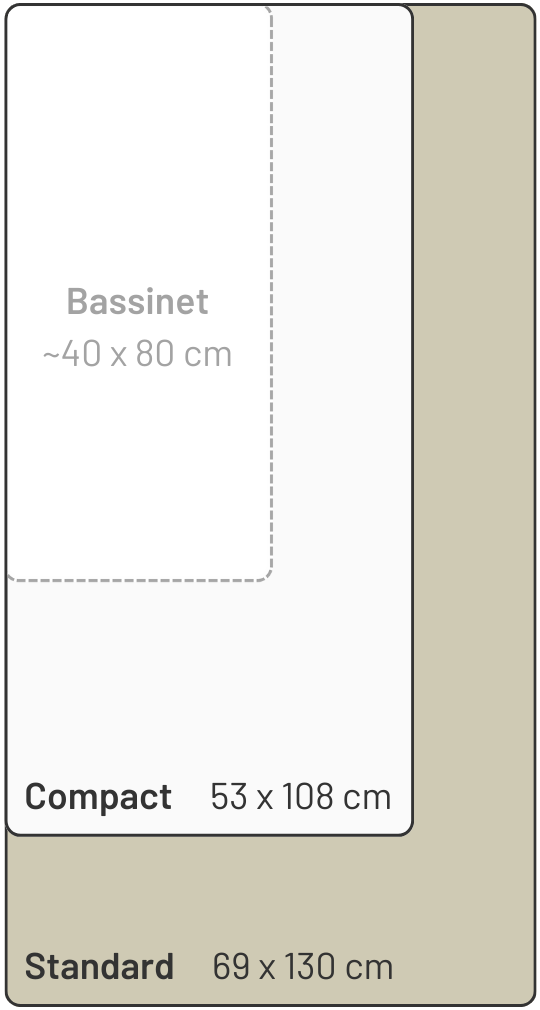
Standard COT mattress size
In Australia, the standard size of a cot mattress is 130cm long by 69cm wide. This size typically fits a standard rectangular cot or crib and is one of the most common sizes on the market, accommodating a child up to 2-3 years.
Compact COT mattress size
Compact cots are shorter and narrower than the standard size at 108cm long by 53cm wide. Compact cots are ideal for children up to 2 years. They are a space-saving option for smaller rooms or placement by your own bed.
Bassinets and bedside sleepers
Bassinets are smaller than cots. They are popular for infants up to 6 months, often used for daytime naps or placed by your bed during the night. A bedside sleeper is purposely designed to sit beside the bed, with a side wall that can be unzipped or removed to allow for easy access during the night.
The size of a bassinet or co-sleeper mattress is not standardized, but they are typically in the range of 70-80cm long and 30-40cm wide. If you decide to use a bassinet or bedside sleeper, be sure to follow safety tips and recommendations.
Oval-shaped cots
There are a number of cots on the market that are rounded or oval-shaped, often designed to be disassembled and reused in various configurations (such as a playpen or seating area). Because of their unique shape, these cots often come with their own mattresses made to fit the frame. Round cot mattresses do not have a standard size, instead varying by manufacturer.
Portacots AND travel cots
In addition to standard cots and cribs, a number of portable sleeping solutions exist for newborns and infants. Portacots and travel cots often feature mesh walls and a padded frame, and can be folded up into a carry bag. Intended for travel and portability, this kind of cot usually includes add-ons such as a change table, rocker or mobile.
In most cases, the mattress comes with the portacot, and is usually larger than a bassinet but smaller than a compact mattress. Like bassinets, portacots usually specify an age, weight or height limit for use, as toddlers will quickly outgrow smaller cots of this size.
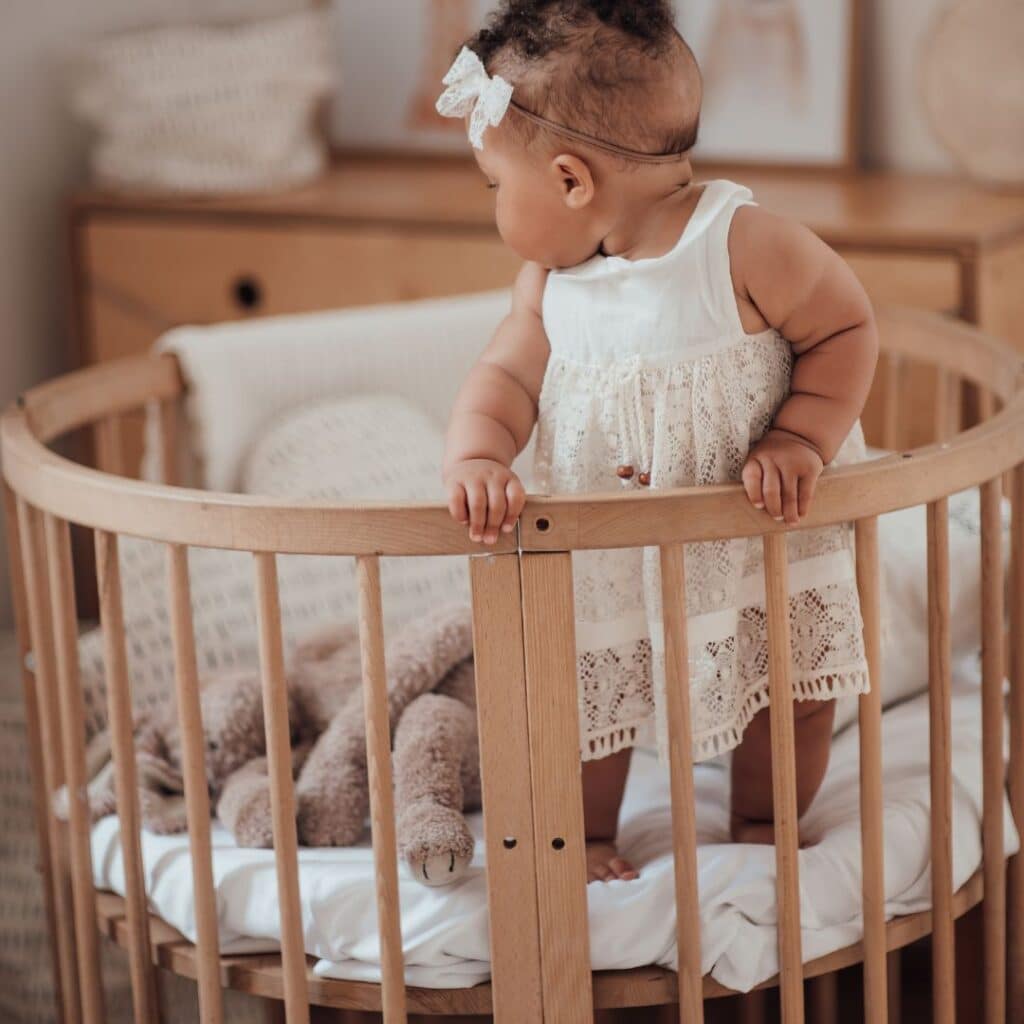
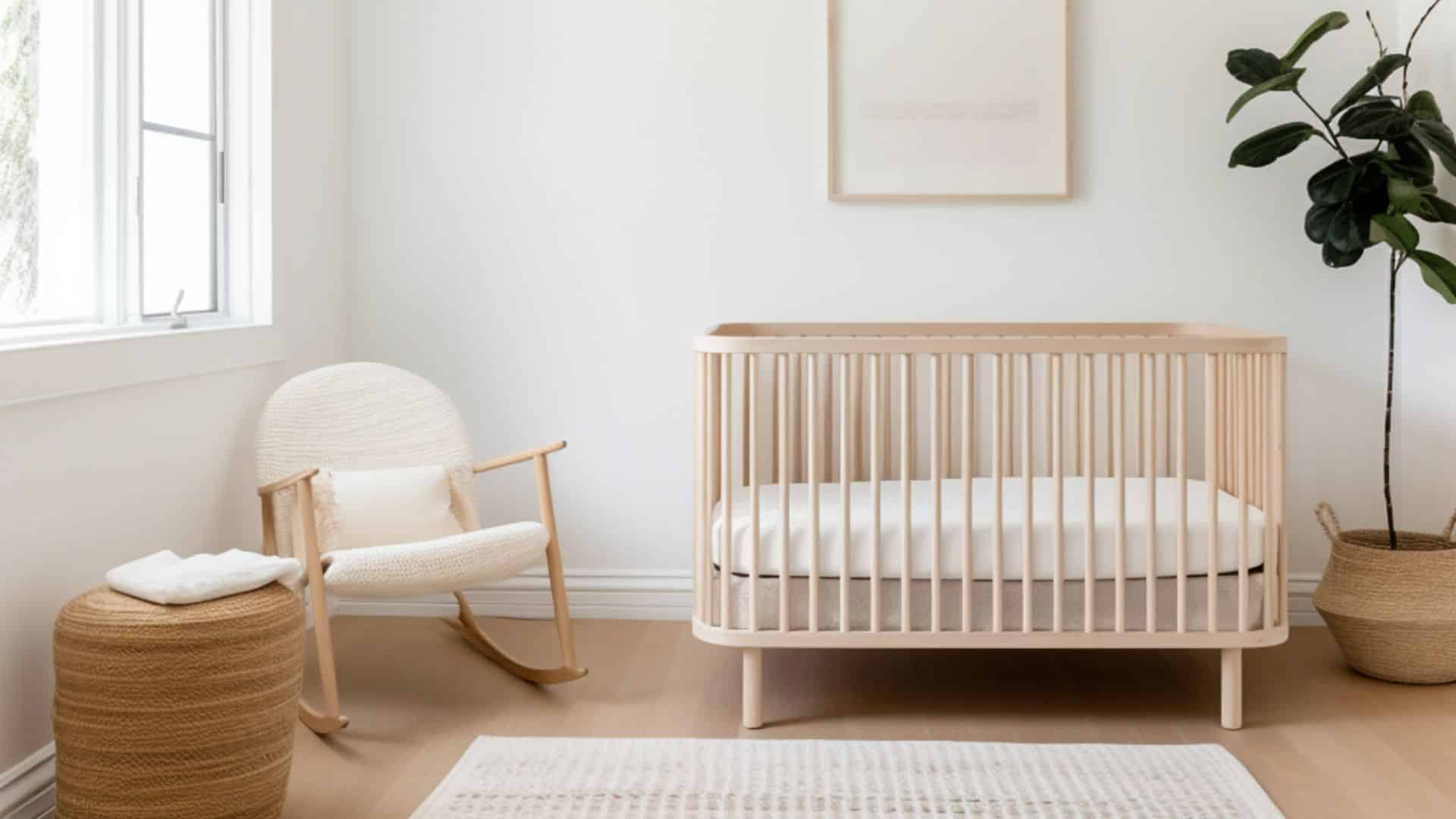
How to choose the right cot mattress
Beyond cot mattress size, the right mattress for your baby will also depend on safety, comfort, future needs and health considerations.
Firmness and safety
As adults, we are accustomed to choosing from firm, medium and soft comfort levels when shopping for a mattress; however, babies should only be sleeping on a firm surface. A soft mattress poses a serious risk to babies and infants, who may experience obstructed breathing if they roll over and their face rests on a soft, loose or pillowy surface. A soft mattress may be a contributing factor in sudden infant death (SIDS) and fatal sleeping accidents, so it is vital to check the firmness of the mattress, regardless of whether it is made of foam or spring.
Spring vs foam cot mattress
Cot mattresses may have pocket springs or innerspring units, or they may be made entirely of foam.
- Spring mattresses are typically sturdier and tend to last longer than foam. They offer more orthopaedic support, able to respond to the pressure applied on the surface. You may wish to read our article on springs vs foam mattresses.
- Foam options are lighter and thinner, making them more versatile for different types of cots. Many foam mattresses can be used on both sides, and are less bouncy overall.
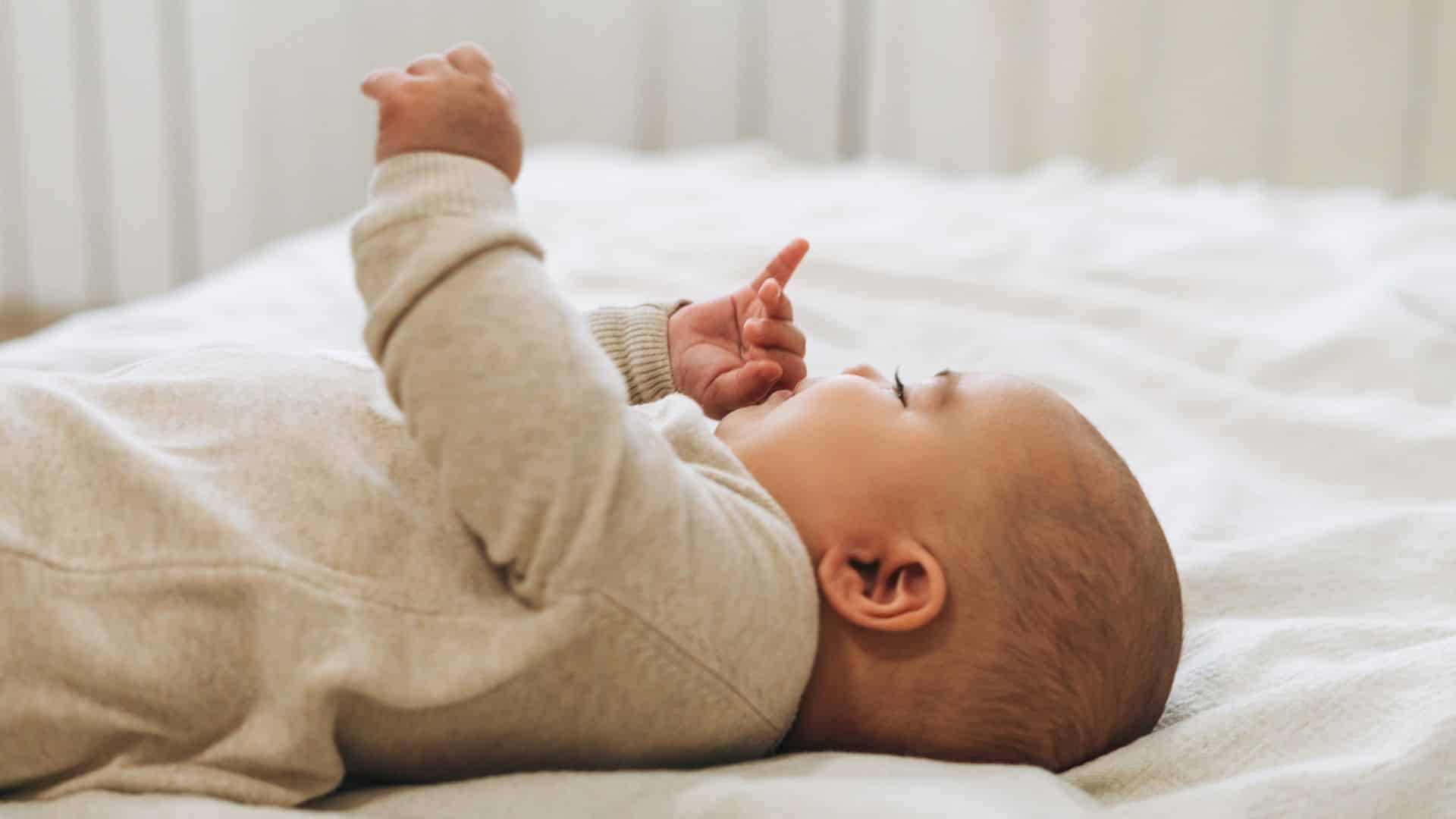
Cover and fabrics
Another consideration is the quality and feel of the mattress itself. The outer layer may be quilted or flat, and it may feature cotton, polyester, bamboo, latex or a fibre blend. Check whether your child is allergic or sensitive to any of the materials used in the mattress, both inside and out.
In addition, the mattress may have a removable cover for washing made of the same or a different material. If it does not come with a cover, consider purchasing a mattress protector to prevent any stains or deterioration. A waterproof protector is best for children’s beds.
Future needs
Before you buy your cot mattress, it may be helpful to ask whether it will be used again for another child or passed along to a new owner. If not, you may prefer a sleeping solution that offers flexibility for future needs. Consider the age, height or weight limit of the mattress and whether it is right for your child and your family. For instance, many bassinets are only recommended for the first few months of life, while standard-size cot mattresses are useful for several years. In fact, many cots and cribs are designed to be convertible, easily adapted to a toddler or child’s bed when needed.
FAQs about cot mattress sizes
What is standard cot mattress size?
In Australia, the standard cot mattress size is 69 x 130 cm, or approximately 27 x 51 in.
What size is a bassinet mattress in CM?
In Australia, the size of a bassinet mattress varies depending on the brand and shape. They are usually around 40 x 80 cm, but it is best to check with the manufacturer or retailer for accurate measurements.
What size is a cot mattress Australia?
In Australia, the standard cot mattress size is 69 x 130 cm, or approximately 27 x 51 in. The smaller compact size is 53 x 108 cm, or approximately 21 x 43 in.
What is the standard size baby mattress?
In Australia, the standard baby mattress size is 69 x 130 cm, or approximately 27 x 51 in. The smaller compact size is 53 x 108 cm, or approximately 21 x 43 in.

